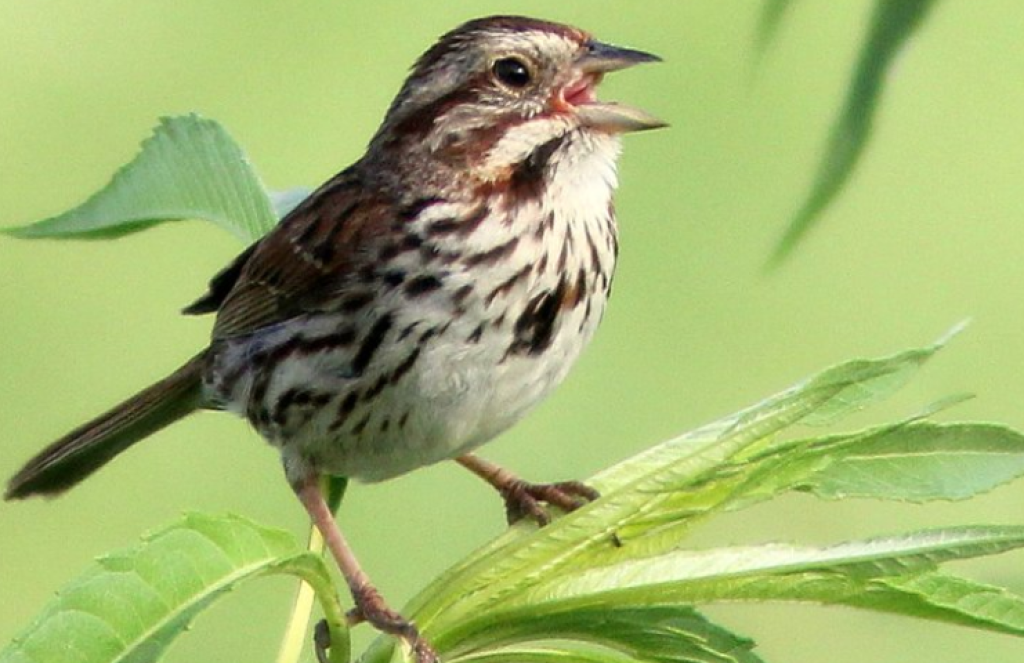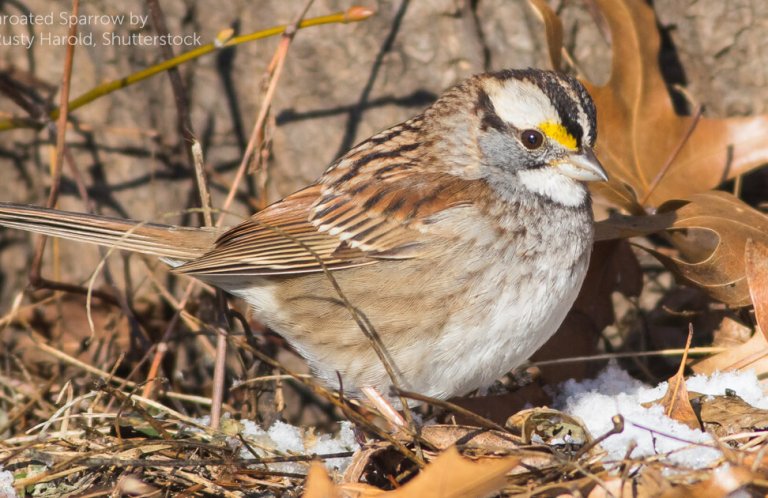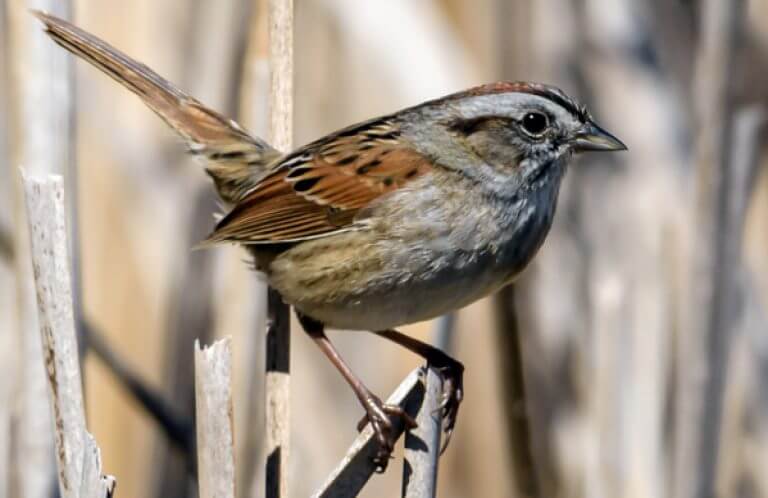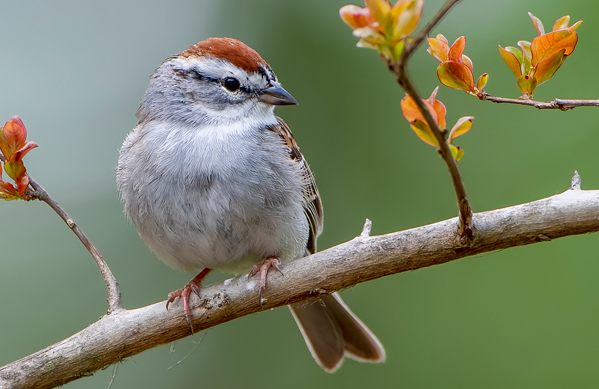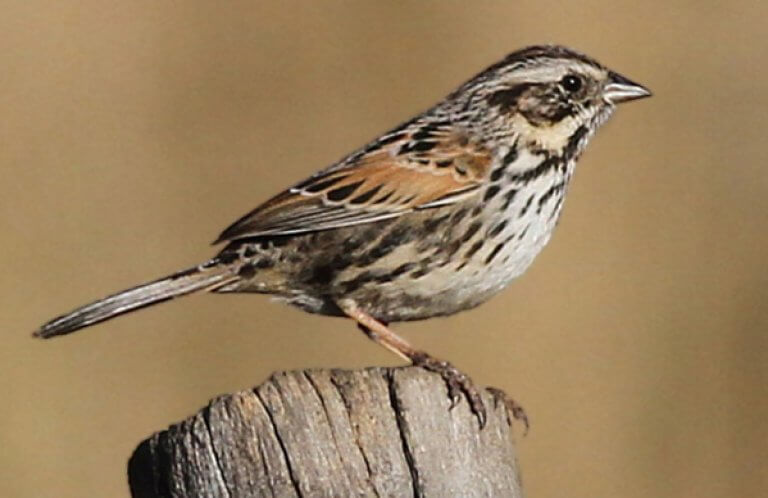About the Song Sparrow
At first glance, the Song Sparrow is a typical "little brown job," a term sometimes bestowed by frustrated birders on species in the large, often look-alike sparrow family. But a closer look at this familiar bird reveals a species as variable and interesting as the most exotic quetzal or cotinga.
Bird of Many Variants
Like the Horned Lark, the Song Sparrow is one of the bird world's most “polytypic” — having more than one type — with 24 to 38 subspecies recognized across Canada, the United States, and Mexico.
The nominate subspecies of Song Sparrow (melodia), found across the eastern U.S., is a medium-sized, streaky-breasted, rather chunky brown bird. However, the Song Sparrow subspecies found in the Aleutian Islands is darker-colored and larger, too — about the about the size of a towhee. Another subspecies inhabits the riparian woodlands of the arid southwest, where ABC is working to conserve habitat for Southwestern Willow Flycatcher and western populations of Yellow-billed Cuckoo.
Songs and Sounds
The Song Sparrow lives up to its name, singing persistently throughout the year. Its song consists of three to four short notes followed by a varied trill, sometimes represented as "maids, maids, maids, put on your teakettle-ettle-ettle ettle." Its call is a loud, distinctive "chimp."
Song:
Vociferous, Variable Singer
Most males sing six to 24 variations of this tune, sometimes as often as five to ten times per minute when establishing territories in the spring. Research shows that females, which sing much less frequently, are attracted to the variability and uniqueness of an individual male's song.
Young male Song Sparrows develop unique song patterns, which they learn by listening to and copying the songs of adult males nearby. Songs become more complex as the young bird matures, then attempts to establish a breeding territory the following spring. Ultimately, each male develops his own musical repertoire.
Breeding and Feeding
Male Song Sparrows defend small nesting territories of only an acre or two, so high numbers of Song Sparrows may be present in good habitat. A pair can nest successfully within an acre or two, and may raise up to four broods a year.
The female Song Sparrow does most of the nest building alone while the male continues to defend their territory. Her nest site varies, but is usually located on or low to the ground in a shrub or small tree. The nest itself is an open cup built of vegetation and strips of bark, lined with softer grasses, rootlets, and animal hair. Once the nest is complete, the female lays an average of three to five eggs, which she broods herself for about two weeks. Both parents feed the nestlings, which mature quickly and fledge after a few weeks. Each adult continues to feed one or more young from their brood for several more weeks.
Like Grasshopper and Vesper Sparrows, Song Sparrows switch their diet with the seasons, feeding on insects during spring and summer and seeds in fall and winter. They forage on the ground in a wide variety of habitats and visit backyard feeders for seed during the winter, often alongside White-throated Sparrows.

Region and Range

Unlike many of its more elusive relatives, the Song Sparrow is common in suburban and even urban areas. In brightly lit urban areas, some Song Sparrows will sing through the night, apparently thinking the sun is just about to rise!
Conservation
Most Song Sparrow populations are migratory and face the typical gamut of human-caused threats as they travel, including collisions, particularly with glass; outdoor cats; and pesticides. Some western U.S. and island subspecies are threatened by habitat loss. Song Sparrows are one of the most frequently noted hosts of Brown-headed Cowbird.
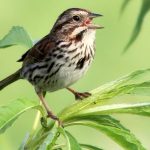
Help support ABC's conservation mission!
Conserving Common and Rare Birds Alike
ABC's BirdScapes approach to migratory bird conservation, which works to conserve both winter and summer habitats, also benefits more common "backyard" birds such as Song Sparrow. Our advocacy programs, including Cats Indoors and Collisions, work to reduce or remove some of the obstacles faced by Song Sparrows as they migrate.
Get Involved
Policies enacted by the U.S. Congress and federal agencies, such as the U.S. Fish and Wildlife Service, have a huge impact on migratory birds. You can help shape these rules for the better by telling lawmakers to prioritize birds, bird habitat, and bird-friendly measures. To get started, visit ABC's Action Center.
Living a bird-friendly life can have an immediate impact on migratory birds in the United States. Doing so can be as easy as adding native plants to your garden, avoiding pesticides, and keeping cats indoors. To learn more, visit our Bird-Friendly Life page.
American Bird Conservancy and our Migratory Bird Joint Venture partners have improved conservation management on more than 6.4 million acres of U.S. bird habitat — an area larger than the state of Maryland — over the last ten years. That's not all: With the help of international partners, we've established a network of more than 100 areas of priority bird habitat across the Americas, helping to ensure that birds' needs are met during all stages of their lifecycles. These are monumental undertakings, requiring the support of many, and you can help by making a gift today.





































